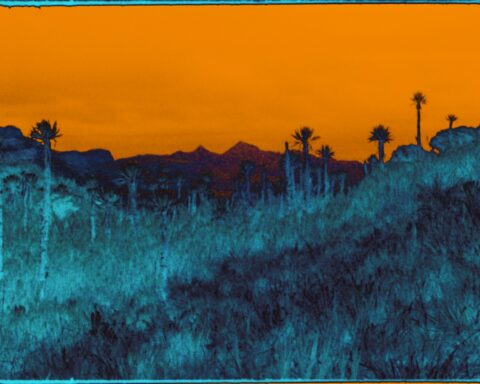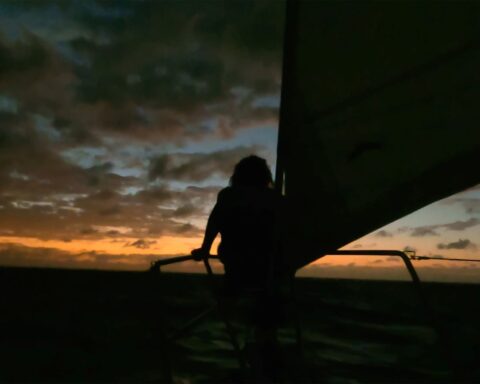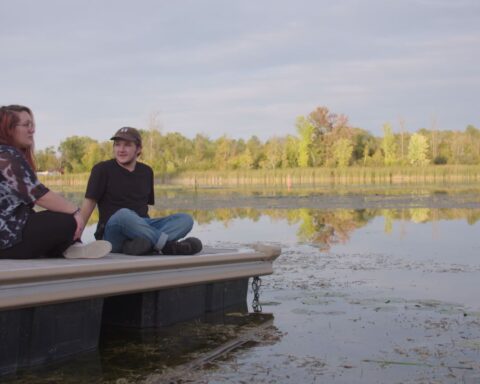The Infinite Happiness
(Denmark/France, 85 min.)
Dir. Ila Beka, Louise Lemoine
As condominiums change the skylines of cities around the world, one has to ask who lives on the horizon. Cramped, overpriced, and impersonal dwellings like condos are known for increasing urban alienation even though they squeeze people into a denser and smaller footprint. They create space, but they aren’t famous for building relationships.
The French/Danish co-pro The Infinite Happiness looks at what results when a shrewd mind imagines housing structures not as opportunities to make as much money per square foot as possible, but as chances to create and build communities. The film spotlights the work of Danish architect Bjarke Ingels and his innovative ‘8’ housing development in Copenhagen. The ultra-modern mid-rise neighbourhood houses 500 dwellings in a loop. It’s a direct response to the perils of contemporary urban living, for residents on the ninth floor can hop on their bikes and pedal all the way to ground level using the structure’s sharp floorplan of ramps that make for accessible and eco-friendly travel. Similarly, the site allows residents to work and play near their homes, as the community offers shops, restaurants, and schools all under the same roof.
Filmmakers Ila Beka and Louise Lemoine opt not to interview Ingels on his group’s achievements and instead decide to show viewers the positive results of the effort. The Infinite Happiness offers a roster of episodes in which the filmmakers observe the inhabitants of the 8 loop community and engage them in conversations about the benefits of living in this new space. The film offers a strong sense of community as the residents share stories with the filmmakers and invite them into their homes with each chapter revealing a different facet of life in the development. Much like the 2013 Danish doc The Human Scale, The Infinite Happiness presents the benefits that arise when people fashion urban space around humans, rather than cars, cheap gas, and out-dated ideologies of suburban convenience.
The residents of 8 are a neighbourly bunch who share positive stories about living in a friendly environment in which dwellings are structured primarily around the social character of communities. A birthday party treasure hunt shows the benefits of the community for children, while a friendly dinner with neighbours reveals that residents feel safe enough to leave their homes without locking doors because the development affords a strong sense of security. The interactions reveal an emphasis on interaction and socialisation, too. While the filmmakers generally don’t seek the residents’ motivations for moving into the community, the openness and accessibility of the residents implies that developments like 8 attract a certain kind of person, one who craves communal bonds. There could be hermits dwelling in the cave-like pockets of the building, but Beka and Lemoine don’t show them.
The filmmakers, however, do reveal a great sense of humour as they playfully move from one day to the next with an incongruous score adding tones of novelty to the journey. A few episodes show the perks of living at 8 for four-legged friends, as one chapter, titled “The Friendly Dog,” simply follows a playful pooch that the filmmakers encounter while scuttling around the ramps. He’s just as eager to play as the humans. Similarly, one episode with a stealthy cat emphasises the refreshing access to green space in the yard and shows how communities thrive with grass and trees. As the kitty hunts, catches, and gobbles a songbird, The Infinite Happiness shows that some of the most satisfying elements of urban life aren’t to be found in concrete jungles.
The Infinite Happiness isn’t unequivocally celebratory, though, as the pieces of the design ultimately assemble a prototype with which viewers may reframe their ways of conceiving urban space. Episodes that follow the mail carrier or a pizza delivery boy around the convoluted structure show the size and overwhelming density of the design. It’s like a maze, an intricate web of confusing numbers and wayward corridors, which shows that the architecture of the place might not be entirely practical even if it affords residents a better quality of life. It’s something which urban dwellers may consider as they search for happiness on their drive home.
While most residents enjoy the benefits of living in a place with so many terraces and short walls, one dweller shows considerable anxiety over the open-access of the residence as tourists flock to the community and feel entitled to use areas that they perceive as public space. The fact that sociable housing is a novelty even in Denmark reveals the large ideological barrier that 8 seeks to overcome. This cure for condos is a happy reward.
The Infinite Happiness is now playing at the Bloor Hot Docs Cinema.
p=.








